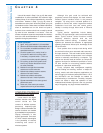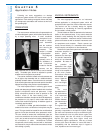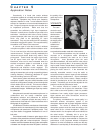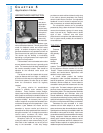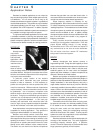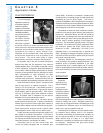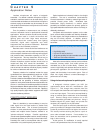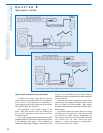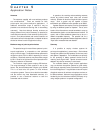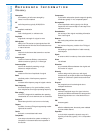
51
Selection
and Operation
of Wireless Microphone Systems
C HAPTER 5
Application Notes
Lavaliere microphones will require a bodypack
transmitter. If a desired handheld microphone model is
available in a wireless version it can be used directly. Since
most handheld transmitters use unidirectional microphone
elements a plug-on transmitter may be necessary for use
with handheld omnidirectional microphones or other wired
hand-held models.
Even for portable or camera-mount use a diversity
receiver is standard choice for professional broadcast
applications. Antenna location should be well planned,
especially when used in a studio environment with
lighting grids and other large metal structures.
Receivers should be located away from lighting
controllers, digital audio equipment and video
equipment that may produce interference. Balanced
audio lines are also standard procedure.
Receivers used in remote trucks face interference not
only from nearby audio and video equipment but they may
also be subject to interference from two-way radio systems
and remote-to-studio transmitters operating on VHF or
UHF frequencies. Two-way transceivers should not be
operated close to wireless transmitters or receivers. The
wireless microphone system receivers should also be
located well away from remote link transmitters. In
addition, both the wireless microphone system antennas
and the remote link antennas should be properly installed
for minimum interference with each other.
Frequency selection for broadcast involves the same
considerations as in other applications for studio use. In ENG
(Electronic News Gathering) or EFP (Electronic Field
Production) situations the additional factors of nearby remote
transmitters and the possibility of wireless microphone
systems in use by other broadcast crews must be taken into
account. In a local area it is sometimes possible to coordinate
frequencies between different stations ahead of time to reduce
the likelihood of frequency conflict at a news site. Specifying
high quality frequency-agile wireless equipment will further
minimize interference problems.
POINT
-TO-POINT WIRELESS
Introduction
Often it is desirable (or even mandatory) to send an
audio signal from one fixed location to another fixed
location without wires. This is termed "point-to-point"
wireless. In some cases this may involve a single transmit
location and multiple receive locations, referred to as
"point-to-multi-point" wireless. Possible applications
include remote speaker/amplifier locations, remote recording/
broadcast operations, and one-way communication links.
Potentially this could be accomplished either by optical
transmission or by radio frequency transmission.
Optical methods are inherently limited to line-of-sight
conditions. The use of conventional (non-directional)
infrared transmission is limited by ambient light levels vs.
practical infrared power levels. Modulated laser
transmission (highly directional) is another optical
possibility but available systems are primarily geared to
high-speed data/video transmission and are not widely (or
affordably) distributed.
Low-power radio transmission systems, on the other
hand, are both widely available and relatively affordable.
For radio signals, line-of-sight conditions are desirable but
they are not strictly required. In addition, point-to-
multi-point is more easily accomplished with a single radio
transmitter.
General requirements for point-to-point wireless include:
• High fidelity audio
• Line level in and line level out
• AC-power capability for both transmitter and receiver
• "Sufficient" transmission distance
Most radio communication products such as wireless
intercoms, two-way radios, and mobile phones are
unsuitable due to lack of audio fidelity. However, two
common high-fidelity radio products that can be used in a
point-to-point application are the wireless microphone
system and the wireless in-ear monitor sytem. Each of
these has slightly different concerns/advantages in
performance and in setup.
Using wireless microphones for point-to-point
A bodypack wireless system can fulfill the
requirements above with two modifications. (See
Figure 5-1.) First, though many receivers have line
level outputs, few transmitters are capable of accepting
a line level input signal. This can be accomplished by
using an external pad or attenuator at the transmitter
input. Second, though most receivers run on AC
power, transmitters are battery-only devices. Using a
suitable external DC power supply can provide the
necessary AC capability for the transmitter.
Once the input signal is sufficiently attenuated and
power is provided, the bodypack transmitter should be
located to provide the best line-of-sight to the receiver.
This usually involves securing the pack to a pole or
some other elevated structure. If wet weather is a
factor, the transmitter can be protected by a "ziplock"
bag or other covering.
At the receiver, no modification is usually required
since it is AC powered and has a line level output.




